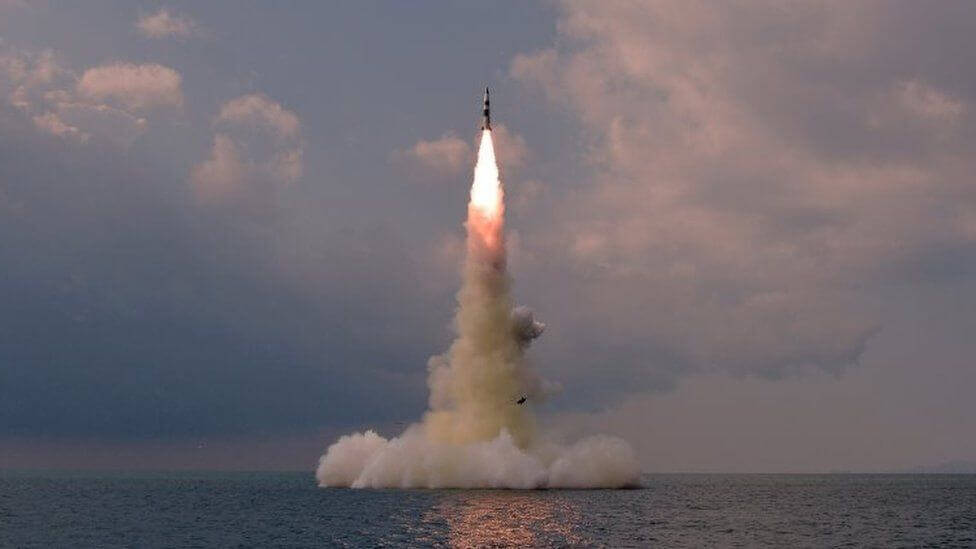North Korea on Tuesday fired what is believed to be another ballistic missile. The test was intercepted by South Korea’s military and the Japanese coast guard.
According to a statement by South Korea’s Joint Chiefs of Staff (JCS), the suspected ballistic missile launch was detected around 7:27 am. It is said to have been launched from an inland area towards the ocean off North Korea's east coast and reportedly landed outside of Japan’s exclusive economic zone.
The Japanese government added the missile likely travelled less than 700 kilometres, assuming it flew on a traditional ballistic missile trajectory. It added that there were no reports of damage to ships or aircraft.
“The (South Korean) military is maintaining a readiness posture while closely monitoring related trends under close cooperation between (South Korea) and the US [United States] in preparation for additional launches,” the JCS statement said.
Likewise, South Korean President Moon Jae In held an emergency meeting following the test and also expressed his concern over a phone call with the US, during which, both sides also shared their intelligence and assessment on the test and coordinated responses. Seoul and Washington agreed to continue pushing the North to resume the peace dialogue.
With reference to the news, Japanese Prime Minister Fumio Kishida told reporters “That North Korea continues to launch missiles is extremely regrettable.” He further noted that the United Nations had just concluded its discussions on how to respond to last week’s launch of what North Korea claimed was a “hypersonic missile.”
Kishida’s comments were referring to Pyongyang’s hypersonic missile test last Wednesday, which claimed to have successfully hit its target. Hypersonic weapons fly towards targets at lower altitudes and can achieve more than five times the speed of sound – or about 6,200 kilometres per hour. The test makes North Korea part of a select group of countries who have attempted the development of hypersonic missiles. The short list includes the United States and China.
Notably, the JCS added that “this is more advanced than the missile North Korea fired on Jan. 5, though South Korean and US intelligence authorities are still conducting a detailed analysis.”
The series of tests come after Supreme Leader Kim Jong Un had said in his New Year’s speech that his country would continue to strengthen its defence capabilities due to an increasingly uncertain military environment on the Korean peninsula.
The South Korean Foreign Ministry announced that for now, senior South Korean and Japanese diplomats held a telephone meeting to discuss the latest test and have agreed to continue to remain in close communication regarding North Korea’s military activities.
North Korea Conducts Second Suspected Ballistic Missile Test In Less Than a Week
Only six days after conducting a hypersonic missile test, North Korea may have tested another “ballistic missile-like object.”
January 11, 2022

IMAGE SOURCE:
